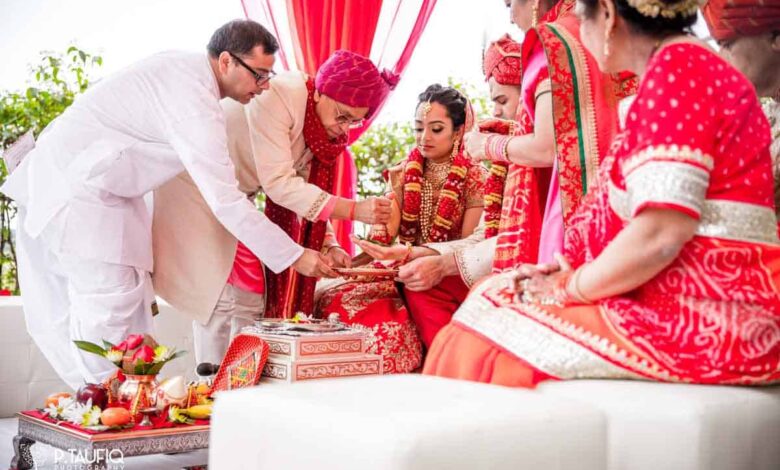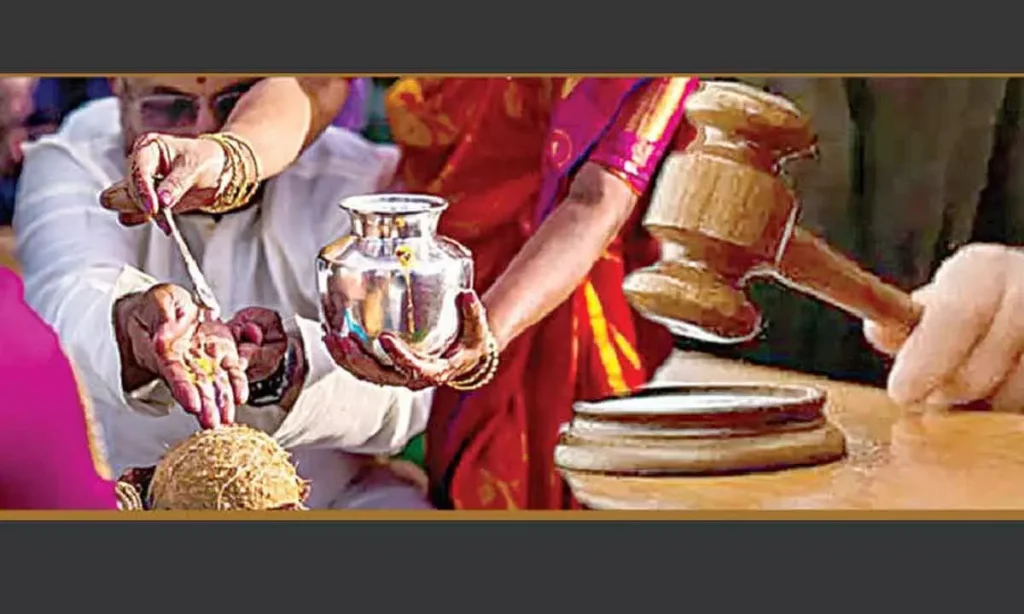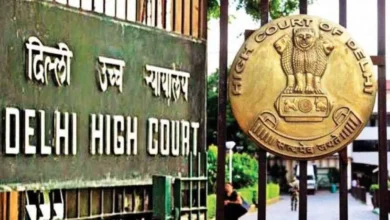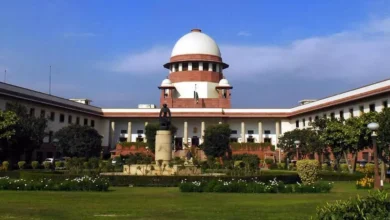Hindu Marriage Act does not require “Kanyadaan”: Allahabad HC
Justice Vidyarthi clarified that the Hindu Marriage Act only mandates the ‘saptapadi’ as a crucial part of a Hindu marriage, and not ‘kanyadaan’ for a Hindu marriage to be solemnized

On April 5, the Allahabad High Court stated that the ‘kanyadaan’ ceremony is not a prerequisite for a Hindu marriage, emphasizing that the ‘saptapadi’ or seven ‘pheras’ is the only required ritual.
Justice Subhash Vidyarthi made this statement during a hearing of a revision petition by Ashutosh Yadav. Yadav argued that his marriage required a ‘kanyadaan’ ceremony, which was not conducted.
Justice Vidyarthi’s Statement on ‘Kanyadaan’
Justice Vidyarthi clarified that the Hindu Marriage Act only mandates the ‘saptapadi’ as a crucial part of a Hindu marriage, and it does not necessitate the ‘kanyadaan’ ceremony for a Hindu marriage to be solemnized.
‘Kanyadaan’, translating to the act of giving away one’s daughter, is a long-standing Hindu tradition that has recently faced significant criticism. Often termed as ‘Mahadaan’ (The supreme donation), this practice involves the bride’s father offering her hand to the groom, symbolically giving her away.
Contrary to popular belief, ‘kanyadaan’ is not required to solemnize a Hindu marriage. The Act allows a Hindu marriage to be conducted following the ceremonies and customary rites of either party. The Act specifies that if the rites and ceremonies include the ‘saptapadi’ (the bride and groom taking seven steps together before the sacred fire), the marriage is considered complete and binding when the seventh step is taken.
What is ‘Saptapadi’
‘Saptapadi’, translating to ‘seven steps’ in Sanskrit, is a Hindu wedding ritual where the bride and groom circle the fire seven times, making seven vows to each other. These vows include respect, support, and faithfulness.

Requirements for Marriage under Hindu Law
The Hindu Marriage Act of 1955 outlines certain conditions for marriage:
(i) Neither party should have a living spouse at the time of the marriage.
(ii) Both parties should be capable of giving consent, have a sound mind, and not suffer from a mental disorder that makes them unfit for marriage and procreation. Neither party should have recurrent attacks of insanity or epilepsy.
(iii) The groom should be at least 21 years old, and the bride should be at least 18.
(iv) The parties should not be within the degrees of prohibited relationship unless their custom or usage allows a marriage between them.
(v) They should not be ‘Sapindas’ (a term used for cousin marriages) unless their custom or usage allows a marriage between them.
Public Reaction to ‘Kanyadaan’
Celebrities and feminists have expressed their opposition to the ‘kanyadaan’ practice. In 2021, an advertisement featuring Alia Bhatt sparked a debate when the actress, while promoting a lehenga, questioned the ‘kanyadaan’ custom. The advertisement was labeled ‘Hindu-phobic’ by some for questioning a ritual integral to India’s dominant culture. Others praised it for challenging the patriarchy inherent in the custom, and some felt it should have gone further in rejecting the ritual.
Actor Dia Mirza chose to exclude the rituals of both ‘bidaai’ and ‘kanyadaan’ when she married businessman Vaibhav Rekhi, stating that they wanted their wedding to reflect their beliefs and not outdated ideas. “We don’t believe that women are commodities to be given away or ‘donated’. Women have agency and can make decisions about their lives independently, so my wedding reflected that by not including a ritual like ‘kanyadaan’,” the actor told PTI.
Meghna Trivedi, an IT analyst based in Mumbai who got married in February the previous year, said the ‘kanyadaan’ ritual doesn’t make sense in today’s context but had to undergo the ritual anyway. Trivedi, a Gujarati who married a Punjabi, said she asked the priest for an alternative, but he insisted that ‘kanyadaan’ is a “must”.
You might also be interested in: Allahabad HC declares UP Madarsa law as ‘Unconstitutional’



